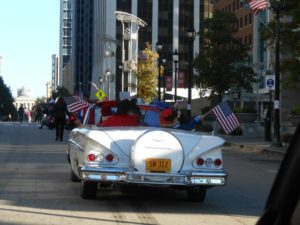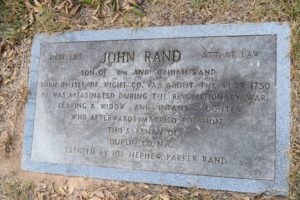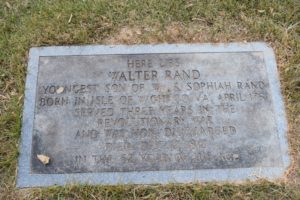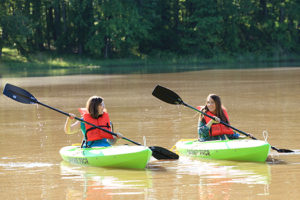 Thank you for your interest in the Rand’s Mill Chapter of The National Society of the Daughters of the American Revolution (NSDAR or DAR).
Thank you for your interest in the Rand’s Mill Chapter of The National Society of the Daughters of the American Revolution (NSDAR or DAR).
Organized on February 1, 1985, in Garner, North Carolina, we are a group of service-minded women who subscribe to the NSDAR motto of “God, Home, and Country.” We meet on the first Tuesday night of each month, September through May, with the exception of January. Past programs have included talks by local historians, authors, and women professionals, while members themselves have participated in activities such as Constitution Week, recognizing veterans, and fundraisers for local high school scholarships. We also manage to incorporate food, fun, and laughter in all we do. You can read more about our chapter’s name origins in the history brief below.
For more information on joining our local chapter or the DAR in general, please contact our membership chair, registrar, or chapter regent at the contact email addresses located in the menu above. We look forward to meeting you soon!
History of Rand’s Mill

The Rand family came to Wake and Johnston counties from Isle of Wight County, Virginia, around 1766. Their involvement in the American Revolutionary War efforts, local successes, and early settlement of what became the Garner area were all good reasons for our organizing regent, Mrs. Elizabeth Ross, to choose Rand’s Mill for our chapter name back in 1985.
John Rand was born in 1750 in Isle of Wight, Virginia, “the eldest of six known surviving children born to William Rand, Sr., (1705-1771), who immigrated from England to the Virginia Colonies about 1735 and married Sophia Almand (1719-1785). His father, a master builder and contractor, arrived in Virginia at the invitation of the Virginia government to supervise the construction of some public buildings at Williamsburg.”1
John Rand appeared before the Johnston County Court of Pleas and Quarter Sessions in 1771 and was appointed Deputy Clerk of the Court by the Honorable Benjamin Heron. He bought his first land in 1768 in Johnston County. After selling this, he moved to what is now Wake County soon after its formation in 1771 to claim a land grant belonging to his father and becoming the county’s first attorney.2 His land was located on both sides of Swift Creek where he built a mill that was unfortunately destroyed. After petitioning for a permit to rebuild the mill on Swift Creek at the December 1779 session of court, he was allowed to do so. John Rand also served as State Attorney for many of the early sessions of Wake County.
On August 23, 1781, John Rand made his will and it was filed for probate in December of that year. Family legend says that a neighbor shot him, and he was buried on his home plantation in the family cemetery, now located on Highway 50 just south of Garner. Inscriptions on the gravestone state that he was born about 1750 in Isle of Wight County, Virginia, the son of William and Sophia Rand, that he was an attorney, and was assassinated during the Revolutionary War. The will names his wife Elizabeth, daughter Mary (married Thomas S. Kenan), and brothers William and Walter.
 The local Rand family story picks up with Walter who was born in 1761 in Isle of Wight County. He “was about 15 when he left school and enlisted with the 15th Virginia Regiment during the Revolutionary War. Nine months after his enlistment, on September 11, 1777, he was wounded in the foot at the Battle of Brandywine, and carried the scar of a British bullet to his grave. Despite his injury, he served until the end of the war.”3 On February 13, 1783, 22-year old Walter married 18-year old Mary Parker.
The local Rand family story picks up with Walter who was born in 1761 in Isle of Wight County. He “was about 15 when he left school and enlisted with the 15th Virginia Regiment during the Revolutionary War. Nine months after his enlistment, on September 11, 1777, he was wounded in the foot at the Battle of Brandywine, and carried the scar of a British bullet to his grave. Despite his injury, he served until the end of the war.”3 On February 13, 1783, 22-year old Walter married 18-year old Mary Parker.
After Walter’s mother died in 1785, he and Mary left Virginia for Wake County, North Carolina. “It was here his older brother John had come, and died in 1781, leaving Walter a plantation at the Falls of Swift Creek.”3

Kayaking on Lake Benson (Image: GarnerNC.gov)
“Walter Rand greatly enlarged the size of the plantation he inherited from his brother through a number of acquisitions of neighboring properties, substantially increasing his wealth. He was a Justice of the Peace to his death and was more than once elected a member of the Legislature.”3 Walter died in 1812 at the age of 51, leaving behind his wife and eight known surviving children.
Many years later, the Rand Mill plantation area was purchased by the local government. The mill and other structures are long gone having burned, but the pond for the mill was enlarged in 1951 into what is now Lake Benson and is managed by the town of Garner as an important recreation area and reservoir.4 Local streets and a park still bear the name of the historic Rand’s Mill, as does our chapter.
Notes:
1. See Find A Grave Memorial #38147529 for John Rand.
2. See Wikipedia article on Garner, North Carolina.
3. See Find A Grave Memorial #38147784 for Walter Rand.
4. See website for Town of Garner, Lake Benson.

